 |
 |
| Athens(Greece) |
| 12/3/04 |
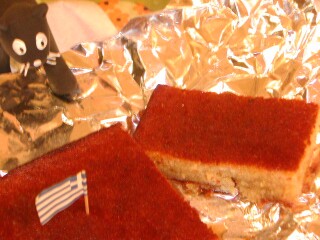 Ravani is a traditional syrupy cake. |
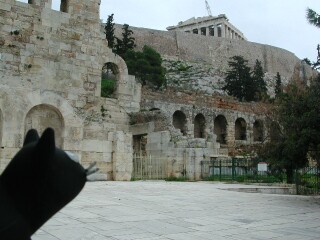 The Parthenon seen from the yard outside the Herod Atticus Odeon (also known as "Herodeon" in greek). |
|
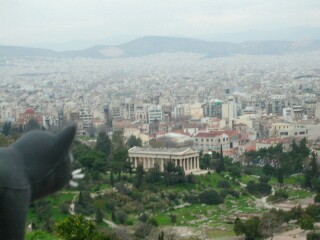 |
View of Athens from the Akropolis. The temple seen was dedicated to the god Hephestus. On the right hand corner you can see part of the ancient agora. Agora means "place of gathering". This is where orators spoke and people gathered around them to listen. Gradually, shops were built around the area, and now the word agora has come to mean marketplace. |

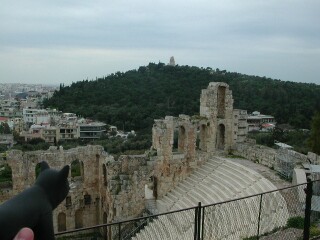 |
| A view of the Odeon from above. It was built in 161 B.C. and is still used for concerts and theater (which is why it was closed when we visited - there was no event taking place there at the time). It holds 5000 spectators. |
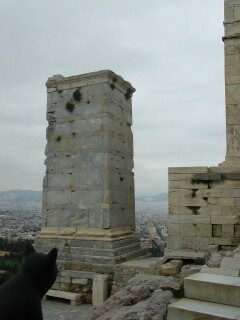 This is right before the ancient entrance to the Akropolis. |
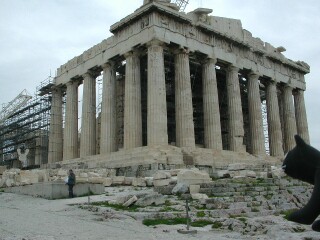 The Parthenon is a temple dedicated to Athena, the Godess-protector of Athens. It was built around 440 B.C. and has been destroyed several times, the worse being in the 1600s when the Ottoman occupying force used it to store gun powder. You can guess what happened... Still, some important pieces of it, such as parts of the frieze, have survived. |
|
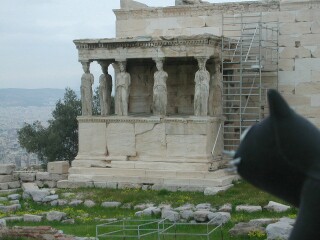 |
This temple was built at around 420 B.C. Its most impressive features are the female statues called "Caryatids" which support the roof of the porch. According to legend, this is the place where the gods Athena and Poseidon had a contest to decide who would be the patron of the city. Poseidon offered a salt water spring and Athena offered an olive tree. The people chose Athena. (Of course, the tree you can see on the left, was planted more recently). |
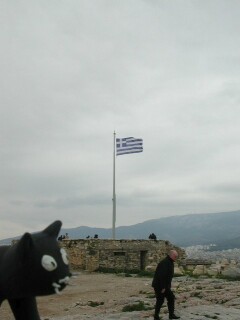 |
This is again at the Akropolis. When the Nazis occupied Athens in the second World War, they ordered the guard of the flag to remove it. He did and then wrapped himself in it and jumped from the Akropolis. One of the very first acts of the citizens at the end of the war was to raise the flag again. | |
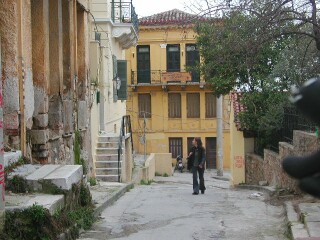
|
||
| ______ | Right below the akropolis there is an area called "Plaka". It is the oldest section of Athens, and if one has time to wander around, many hidden, old and beautiful buildings can be found. It is like a small village hidden in the middle of the city. When you are in Plaka, you don't believe it possible that there actually is a city around you. | |
 |
All this walking and climbing on the Akropolis made Chacha hungry. Here she is having loukoumades (singular: loukoumas, a kind of donut drowning in honey and cinnamon), cheese pie (phyllo dough with feta cheese filling and sesame on top) and bougatsa (phyllo dough with cream filling and powdered sugar on top). | |
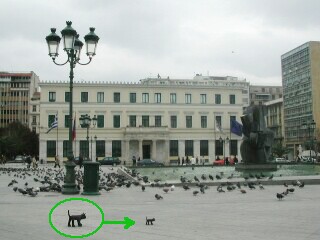 |
||
| The city hall in Athens. Practically every square in Athens has a population of pigeons that usually let you feed them from your hands. Watch Chacha trying to sneak up on them. | ||